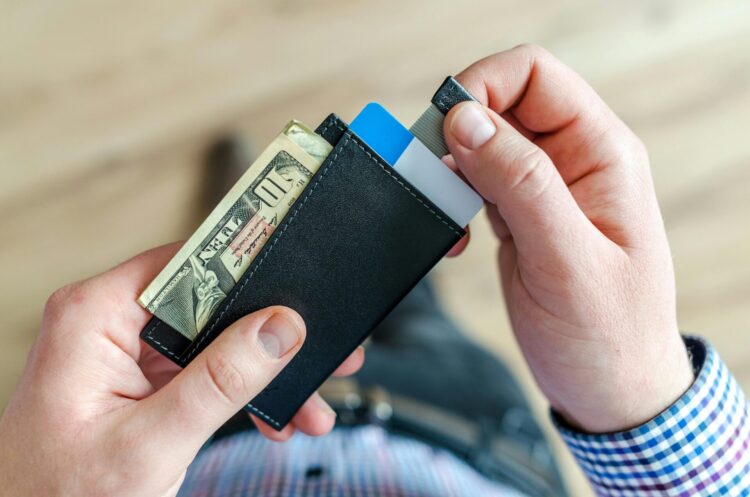It’s an Uncertain World
There’s no way of predicting the unexpected expenses that life can toss your way. From replacing your car’s transmission to putting in a new furnace, everyone runs into a financial emergency. But not everyone is prepared for it.
A recent survey by Statistics Canada found that one in four Canadians are unable to afford a $500 emergency expense. And with rising interest rates and high inflation, it’s no surprise that many Canadians are concerned about their finances.
If you’re feeling similar concerns or you don’t have a financial contingency plan, now is a good time to reach out for peace of mind. Here are some solid steps you can take to build an emergency fund that will help you sleep better at night, knowing you’re prepared.
Take Small Steps Toward Saving
As a general rule, it’s a good idea to have enough in your emergency fund to cover up to six months of living expenses. For many people, that means stashing away $30,000 or more. But aiming for a large, lump-sum savings goal like that can be discouraging. Instead, try building your savings in small steps.
Take a realistic look at your income and spending and figure out how much you can afford to set aside right now. Maybe you can only put away $20 or even $5 a week. That’s a good start. Simply choose a set amount per week or month that you’re comfortable with and have it automatically transferred from your chequing account. Or have it taken right off your paycheque if your employer offers a workplace savings plan. Review the arrangement regularly, and increase the amount you’re saving, if you can.
For a clear picture of what goes in and what comes out of your bank account, try our budget calculator.
Keep Your Emergency Fund Separate from Other Savings
Let’s say your furnace quits in the middle of a cold snap, or your SUV blows a gasket on a road trip. If you’ve built up a healthy sum in your retirement savings, you might be tempted to raid those savings. But here’s why you shouldn’t: it might cost you more in the long run.
Understanding the Costs of RRSP Withdrawals
For starters, all withdrawals from registered retirement savings plans (RRSPs) are subject to income tax and will result in the permanent loss of contribution room. Once you’ve taken it out, you can’t put it back in (except for education and home purchases under the Lifelong Learning Plan and Home Buyers’ Plan).
Any withdrawals from your RRSP are immediately subject to withholding tax. If you withdraw up to $5,000, the withholding tax rate is 10%. If you withdraw between $5,001 and $15,000, the rate is 20%. For amounts over $15,000, the rate is 30%. These tax rates apply in all provinces except Quebec, where provincial tax rates apply on top of the federal withholding tax.
There’s more: whatever you withdraw from your RRSP is also included in your taxable income for the year. If your marginal tax rate is higher than the withholding tax rate, you’ll owe more on the money you’ve withdrawn the following spring.
The Bottom Line
To avoid dipping into your retirement savings, be sure to stash your emergency funds in a separate account.
Don’t Rely on Debt
Feel the urge to reach for your credit card when you’re in a jam? It’s tempting, but try to resist. Remember that credit cards charge high interest rates when you don’t pay your balance in full every month. Using your line of credit for fast cash may seem like a good idea. But remember it’s still money you must pay back. The interest rate might be lower, but the debt is still there.
For emergencies, you’re better off avoiding the plastic and depending on your savings instead.
Consider Opening a Savings Account
The ideal emergency fund lets you see your money grow and access it quickly and easily. Your best bet could be a registered tax-free savings account (TFSA) or a non-registered high-interest savings account. Your choice might depend on which is more important to you: potential growth or ease of access.
Evaluating the Tax-Free Savings Account (TFSA)
With a TFSA, you can grow your money with various kinds of investments, including bonds, stocks, mutual funds, and exchange-traded funds – not just cash. Your investment return could potentially be in the high single- or low double-digits if your investments perform well. Or you could lose money if they don’t.
Just keep an eye on your contribution limit, which currently stands at $6,500 per year. This is in addition to any amount you withdrew from your TFSA in an earlier year and are now re-contributing. Unlike RRSP contributions, your TFSA contributions aren’t tax deductible. The TFSA is a tax shelter for both your investments and your investment returns, so you won’t have to pay tax when you take it out. Any investment income you earn won’t be taxed – not even when you take the money out of your TFSA.
Weighing Accessibility
While a TFSA offers tax-free growth, you may have restrictions on how quickly you can access your money if you hold investments in it. This could be highly inconvenient if rain is pouring through your roof, or your car broke down miles from home. However, this is not the case if you are using it purely as a savings account.
References
Sun Life. Farhana Uddin (2023, June 21). How to build your emergency fund. Sun Life Financial. Retrieved September 3, 2024, from https://www.sunlife.ca/en/tools-and-resources/money-and-finances/managing-your-money/how-to-build-your-emergency-fund/



